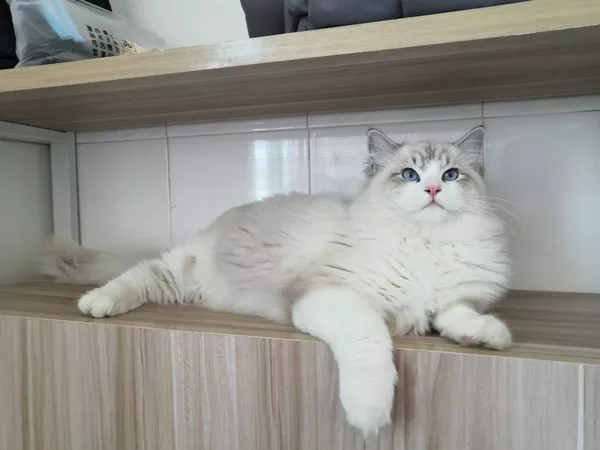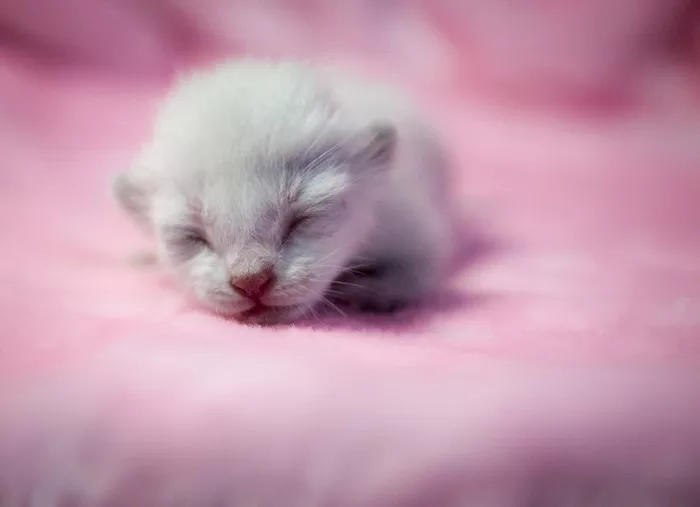Ragdoll kittens are beloved for their affectionate nature, striking blue eyes, and luxurious coat. However, like all young cats, Ragdoll kittens can be quite energetic and playful, sometimes exhibiting behavior that may seem overly rambunctious to their owners. In this comprehensive guide, we’ll explore the factors that influence when Ragdoll kittens calm down, as well as tips for managing their behavior during their formative months.
Understanding Ragdoll Kittens’ Behavior
1. Playful and Energetic Nature
Ragdoll kittens are known for their playful and energetic disposition. Like most kittens, they have boundless energy and a natural curiosity about their surroundings. They may engage in activities such as running, jumping, and pouncing, often accompanied by playful antics like batting at toys or chasing shadows.
2. Social and Affectionate
Despite their playful nature, Ragdoll kittens are also highly social and affectionate. They enjoy spending time with their human companions, often seeking out cuddles, lap time, and affectionate interactions. Ragdolls are known for their gentle and docile demeanor, making them well-suited for families and households with children.
Factors Influencing When Ragdoll Kittens Calm Down
1. Age
One of the primary factors that influence when Ragdoll kittens calm down is their age. Like all kittens, Ragdolls go through various developmental stages as they mature, with their energy levels typically peaking during their early months of life. As they grow older, they may gradually become calmer and more relaxed, although individual differences in temperament and personality can also play a significant role.
2. Socialization and Training
Proper socialization and training can also influence a Ragdoll kitten’s behavior and temperament. Early exposure to different people, environments, and stimuli can help kittens develop confidence and resilience, reducing the likelihood of fear-based behaviors or anxiety later in life. Positive reinforcement training techniques can also be used to teach kittens appropriate behavior and boundaries, helping them learn to channel their energy in constructive ways.
3. Health and Wellness
A Ragdoll kitten’s overall health and wellness can impact their behavior and energy levels. Kittens that are in good physical condition and free from underlying health issues are likely to be more active and playful than those experiencing discomfort or illness. Regular veterinary check-ups, a balanced diet, and plenty of opportunities for exercise and mental stimulation are essential for maintaining a Ragdoll kitten’s well-being.
4. Spaying and Neutering
Spaying (for females) and neutering (for males) can also influence a Ragdoll kitten’s behavior and temperament. These procedures, typically performed around six months of age, help prevent unwanted litters and reduce the risk of certain health issues. They can also have a calming effect on kittens, reducing behaviors associated with mating instincts such as spraying, yowling, and roaming.
Tips for Managing Ragdoll Kitten Behavior
1. Provide Plenty of Playtime
Ragdoll kittens thrive on interactive playtime with their owners. Provide plenty of toys, scratching posts, and play structures to keep them entertained and engaged. Spend time playing with your kitten each day, using toys that encourage physical activity and mental stimulation.
2. Establish Routine and Structure
Ragdoll kittens benefit from routine and structure in their daily lives. Establish a consistent schedule for feeding, playtime, and rest, helping them feel secure and confident in their environment. Consistency can also help minimize behavioral issues such as excessive meowing or destructive behavior.
3. Create Safe Spaces
Create designated safe spaces within your home where your Ragdoll kitten can retreat when they need privacy or downtime. Provide cozy beds, hiding spots, and elevated perches where they can relax and observe their surroundings without feeling threatened or overwhelmed.
4. Use Positive Reinforcement
When training your Ragdoll kitten, use positive reinforcement techniques to encourage desirable behaviors. Reward good behavior with treats, praise, and affection, reinforcing the behaviors you want to see more of. Avoid punishment-based training methods, as these can lead to fear and anxiety in kittens.
5. Provide Environmental Enrichment
Environmental enrichment is essential for keeping Ragdoll kittens mentally and physically stimulated. Offer a variety of toys, puzzles, and interactive games that challenge their natural instincts and provide opportunities for exploration and problem-solving. Rotate toys regularly to prevent boredom and keep your kitten engaged.
6. Practice Patience and Understanding
Finally, remember to practice patience and understanding when interacting with your Ragdoll kitten. Like all young animals, they are learning and growing every day, and it may take time for them to develop the behaviors and habits you desire. Be patient and consistent in your training efforts, and celebrate small victories along the way.
Conclusion
Ragdoll kittens are delightful companions known for their playful, affectionate nature. While they may be quite energetic during their early months of life, Ragdolls typically begin to calm down as they mature and grow older. Factors such as age, socialization, health, and spaying/neutering can all influence a Ragdoll kitten’s behavior and temperament. By providing plenty of playtime, establishing routine and structure, creating safe spaces, using positive reinforcement training techniques, and providing environmental enrichment, you can help your Ragdoll kitten grow into a happy, well-adjusted adult cat. With love, patience, and understanding, you and your Ragdoll kitten can enjoy a lifetime of companionship and shared adventures.























